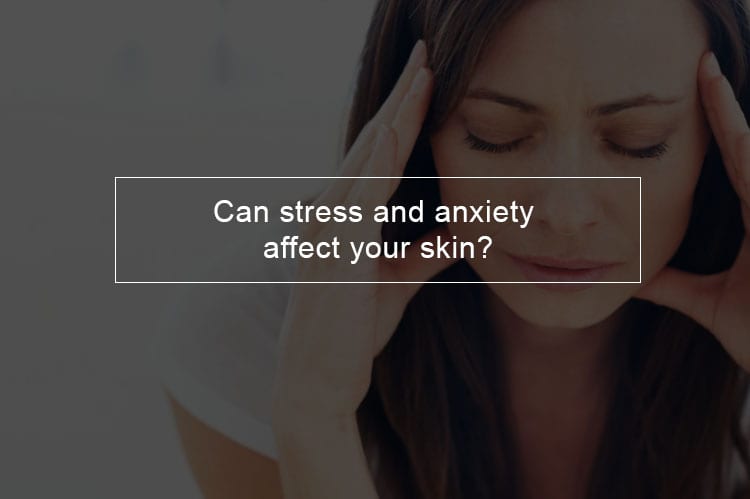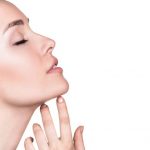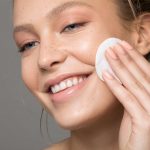
If you have suspected that stress has the power to make your skin act up, prepare to feel gratified. Maybe you have realized that every time you are stressed about a job or personal life a new pimple pops up. This is not in your head-feeling stressed out affect your skin. Read through to find the science behind stress impacts on your skin, plus what you can do about it.
What stress can do to your face?
Skin conditions caused by stress and anxiety
Stress and anxiety happen to everyone. However, since you cannot avoid job, bills, or life, the best thing to do is learn to manage the stress. If you do not, symptoms of stress can show up on your hair, skin, and nails in ways you might not like. Below are some of the things stress can do to your face.
Anxiety can cause eye bags
Anxiety can keep you from getting enough sleep. This can make fluid to pool below your eyelid area, and what you end up with a puffy look.
To prevent shrink puffiness due to stress, get at least eight hours of sleep. You should also shut off any electronic devices an hour before you go to sleep since light from electronic devices simulates sunlight. Take coffee to help you calm down before you go to bed. If you still wake up with puffy eyes massage it with ice cubes.
Stress can dry and make the face skin flaky
If you are anxious possibilities are you do not drink enough water. You might also drink coffee or soda, which can be dehydrating. If your body does not get the right hydration it requires, your skin will end up looking dry. To avoid having dry skin, drink a lot of water; at least eight glasses a day. You might also down some green tea for a boost of healthy antioxidants and consume high water content food such as fruits and veggies.
Stress can cause acne and blemishes conditions
Stress makes the skin flare up regardless of what you are prone to, whether it is acne, eczema or psoriasis. When it comes to blemish and acne, stress release cortisol, which can throw off the other hormones in your body and result in breakouts on your face or body.
Stress can disrupt the balance between the good and bad bacteria in your gut. That can show up on your skin in the form of acne. To prevent acne, practice deep breathing to calm any anxiety. You can also engage in meditation exercise for about ten minutes. Drinking a lot of water and eating a well-balanced diet is essential too since your body can not manage stress well if it is not adequately nourished.
Beware stress can cause rashes on the face
When stress crops up, it takes over too much harmful bacteria outweighs the good. To prevent stress rashes practice breathing exercises when you are stressed. You should also consult a doctor.
Anxiety can result in the flushed face
When you are anxious, you breathe in short, shallow breaths and can even find yourself holding your breath for periods, which can result in flushing and redness. To tone down the redness of the face, breathe a relaxer and meditate.
Beware that stress can cause fine lines on the face
Continually making certain facial expressions, like furrowing your eyebrows, when you're stressed or pursing your lips, can result in deeper wrinkles. To prevent blur lines, e mindful of making certain unconscious facial expressions when you are stressed.
Can stress change the shape of your face?
Stress does ugly things to us. Chronic life stress is associated with weight gain. When you are stressed, our bodies release cortisol, which then interacts with the hormones to stimulate your appetite for high sugar and high-fat food. Besides, when you are stressed, good food stimulates an opioid release- your body’s natural version of heroin.
Typically when we get stressed foot physiologically comforts us, and then we indulge in it to alleviate our stress. The more you are stressed, and the more you eat, the more your face becomes fat. Besides stress can trigger premature aging on a cellular level. This can result in wrinkles formation.
What stress can do to your face?
Is skin dryness a symptom of stress?
Stress plays a significant part in the health of our skin. When we are stressed, cortisol hormone is released. Cortisol causes many things to happen in human bodies, inclusive of accumulating fat and making the skin either dry, oily, wrinkled or full of blemishes.
One of the main effects of stress is dry skin. In this occasion, cortisol decreases the skin’s natural production hyaluronic acid, a natural moisturizer. It can also destroy the skin’s protective qualities that allow it to keep hydration levels up. When things are compromised, the skin, as an effect of stress, becomes dry and damaged.
What does stress rash look like?
Tips for identification of anxiety rash
Stress rashes frequently take the form of hives. Hives can form in any part of the body. Body areas affected by hives are red, raised and swollen. These blotchy parts can be as small or large. Occasionally these patches may connect to form even larger welts. The welts can range in size from a small patch to a large patch. Hives might appear as general skin swelling that develops in one place on your body. This section of swelling may disappear and form in another place.
Stress symptoms
We all know about common symptoms of stress: eating our feelings, snapping at our friends or partners and sometimes acne. However, other surprising symptoms could be your body’s way of telling you to relax you are stressed. From skin rashes to forgetfulness, these are anxiety signs you should not ignore.
- If you have been experiencing a killer headache more often than usual, it could be a sign of stress.
- Change in sex drive could also be a potential sign of stress; it is no surprise that long, stressful hours do not precisely make individuals jump into bed with their partner.
- Stress can cause acne. However, your skin can also indicate if you are stressed if you are having rashes pop up seemingly out from nowhere.
- Beware that pain in your neck that you attributed to long hours at the computer could be a sign of stress and anxiety; stress affects the musculoskeletal system, resulting in tight, contracting muscles
- Biting your nails and picking at cuticles could be a way of distracting ourselves from fear.
- A bad stomach and nausea can be a possible sign of stress. Though it is a temporary condition, if it happens, try eating a ginger chew to keep nausea at control.
- If you keep forgetting things you might be stressed
- When you are stressed out, it is reasonable to want to stay in bed all day.
Stress hives
Hives are red welts that bump on the surface of the skin- and they can grow to the size of dinner plates. Sometimes, small hives merge into huge patches that seal large areas of the body. If you had hives before, you could think their appearance is the worst part. Frequently, hives are an allergic reaction brought on by various foods, fabrics, or chemicals.
However, other times, extreme weather, sweat or plain old stress can trigger an outbreak- without warning. Stress hives are more common in women and frequently appear for the first time in your thirties, forties, or fifties. If you have had a stress hive before, you are more likely to experience it again.
Still, no one is immune- it can occur to any out of the blue. It can be challenging to figure out the leading cause of a hives outbreak, but try looking back over the last few days to rule out exposure to new foods or products. If stress is the likely reason, try to dial down the tension. Avoiding stress is the first recommended remedy — but, of course, that’s hard to do, and unfortunately, the itchiness, pain, and appearance of hives can increase stress levels even more. Try de-stressing with a walk outdoors, a book-and-tea break, or delegating some of your tasks.
How do you get rid of a stress rash?
How to cure anxiety rash?
No matter your age, you have possibly experienced a rash at some point in your life, but maybe never knew how to get rid of it. Below are some of the practices of how to get rid of a rash using foods and essential oils.
1. Eat organic foods to reduce the exposure to toxins and chemicals
2. Consume more oranges and yellow fruits to control stress rashes. The fruits can help improve resistance to rashes.
3. Adequate protein assists the immune system shield against infections that result in rashes. Aspire for three to four ounces of protein minimum per meal.
4. Flax and chia seeds can reduce systemic inflammation leading to a reduction in symptoms. Add chia or flax seeds to salads and smoothies.
5. Use oils which are not heated above 129 degrees during pressing such as olive oil and coconut oil
When to see doctor:
- If you’re experiencing swellings that are itchy and inflamed, you possibly have hives. Hives can frequently be treated at home or go away on their own without any treatment.
- If the swellings are hard or filled with pus or something other than clear fluid, they may be a symptom of an underlying medical problem. Hives that happen along with peeling of the skin or blisters can be a symptom of a severe allergic reaction.
- If you develop a rash after taking a medication, you should report to your doctor immediately. You should also consult your physician if you have: pain, blisters that discharge yellow or green fluid, a rash over your whole body, and a fever
- If you think your rash is the result of a preexisting condition that you are presently seeking treatment for, it may be beneficial to consult your physician. Your physician can confirm your suspicions and take the necessary next steps.
- Visit a doctor if you suspect the rash is a result of an allergen. Severe allergic responses may result in anaphylaxis, which requires immediate medical treatment
How to reduce the effects of anxiety on your skin ?
To avoid the impact of stress on the skin you can:
- Get enough sleep to reduce the effect of stress on the skin. During sleep, the skin repairs what has been damaged during the day. Lack of sleep puts stress on the skin. Make sure you sleep at least seven hours a day.
- Exercise often to reduce the effects of stress on the skin. Physical activities boost circulation, which fights the effects that adrenaline can have on the skin. In simple words, exercising helps your complexion, and, when there is more blood flow to the skin, there are fewer toxins, promoting healthy skin.
- Take time to relax and meditate to reduce the effects of stress on the skin. If you take the time once in a while to slow down, take some breaks, relax and try to make things not too seriously, you might not be stressed. Meditation, deep breathing, and quiet alone time can help in eliminating stress and the effects that stress has on the skin.




